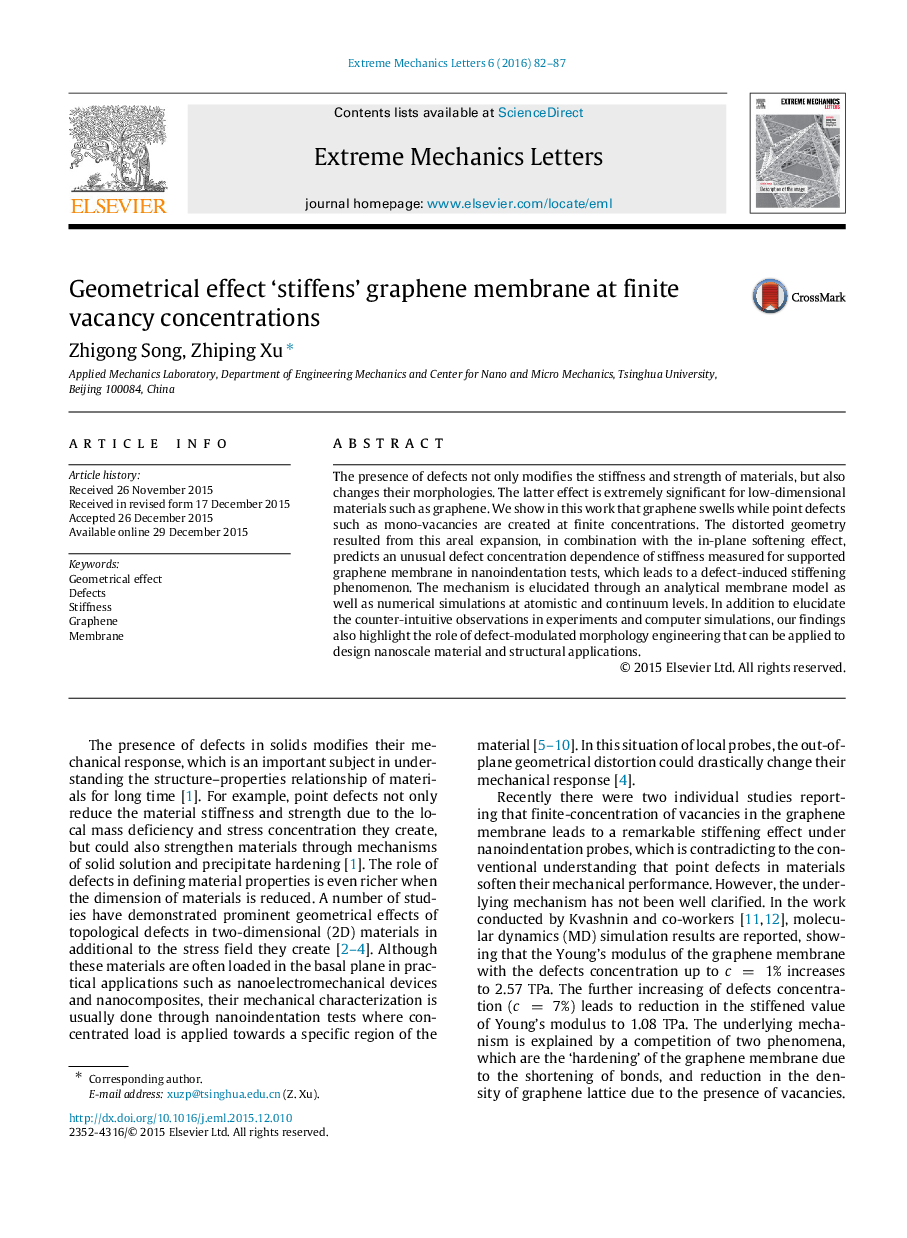| Article ID | Journal | Published Year | Pages | File Type |
|---|---|---|---|---|
| 778481 | Extreme Mechanics Letters | 2016 | 6 Pages |
The presence of defects not only modifies the stiffness and strength of materials, but also changes their morphologies. The latter effect is extremely significant for low-dimensional materials such as graphene. We show in this work that graphene swells while point defects such as mono-vacancies are created at finite concentrations. The distorted geometry resulted from this areal expansion, in combination with the in-plane softening effect, predicts an unusual defect concentration dependence of stiffness measured for supported graphene membrane in nanoindentation tests, which leads to a defect-induced stiffening phenomenon. The mechanism is elucidated through an analytical membrane model as well as numerical simulations at atomistic and continuum levels. In addition to elucidate the counter-intuitive observations in experiments and computer simulations, our findings also highlight the role of defect-modulated morphology engineering that can be applied to design nanoscale material and structural applications.
